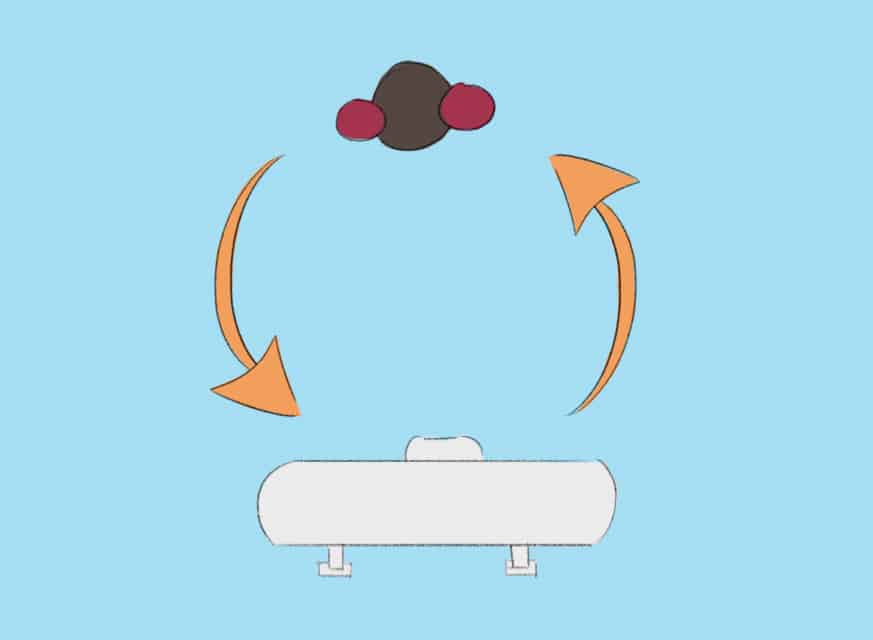[dropcap]M[/dropcap]ost efforts to turn back the seemingly incessant onslaught of climate change emphasize the importance of eliminating carbon dioxide emissions. But with the Global Carbon Budget estimating that annual carbon dioxide emissions have grown by over three billion tonnes in 2015, it is clear that current emission-combative strategies are failing. A new study published by a University of Toronto research group may be the beginning of a solution.
Published by Nature in August, the study led by Professor Ted Sargent of the Faculty of Engineering and Applied Sciences focused on a method for efficiently breaking down carbon dioxide into carbon monoxide, a precursor to many fuels.
Using nanoengineering, the group developed a more efficient method of removing oxygen atoms from CO₂ via electrochemistry.
Previously, this reaction involved electrons travelling through a salt water bath containing dissolved CO₂. The electrons transferred their energy to the CO₂ molecules, giving them the energy needed to break their bonds. The oxygen atom freed from the molecule will attach itself to two hydrogen atoms to create water, while the remaining carbon and oxygen atom form carbon monoxide.
This process is established, but is also impressively inefficient due to CO₂ not being very water-soluble.
Instead, Sargent’s team tried using gold nanoneedles as a catalyst to run the electrons through. Each needle is about 10,000 times smaller than a human hair.
Phil De Luna, a PhD student in the group, explains that the choice to use gold was integral to the increase in efficiency because “gold is one of the only metals which has a strong affinity for carbon dioxide, which is necessary for the reaction.” Both silver and copper can also act as catalysts but not to an equivalent level of efficiency.
The electrical current running through the catalyst generates an electrical field, drawing surrounding CO₂ molecules to the needles’ tips. This gathering of molecules allows for a much more concentrated distribution, greatly increasing the CO₂’s exposure to the electrical energy and, in turn, the number of conversions to CO.
The group established a full order of magnitude with higher current density than the best previously existing gold rods or nanoparticles, generating 22 milliamps per square centimetre.
This increase means a substantial elevation of efficiency, an important aspect when one considers the potential use of renewable energy sources powering these reactions. Sources of energy like solar generate low voltages, inciting a need for lower energy requirements.
This breakthrough, in tandem with the developing field of Carbon Capture Systems, will hopefully provide a systematic way of breaking down CO₂ before it ever reaches the atmosphere. Carbon Capture Systems are designed to capture CO₂ emissions and then store them, either deep underground or within specially designed chambers.
Storage, however, is an expensive and resource-heavy process that creates little incentive for the implementation of Carbon Capture Systems, which can be noted in the fact that only 0.01 per cent of CO₂ emissions were captured in 2015.
With a more efficient reaction like the one created by Sargent’s group, carbon capture could become more industrious, potentially producing “fuels such as methane and ethanol, as well as high value chemical feedstocks such as ethylene, a plastics precursor,” according to De Luna. “Our technology will allow for this captured CO₂ to be put to use and recycled into fuels for energy storage or chemical feedstocks for the manufacturing industry.”
Next up for Sargent’s group? De Luna says they have their sights set on developing more complex and productive hydrocarbons so that CO₂ conversion can impact greater change: “Our ultimate goal is to create a catalyst which can be scaled up and commercialized for the conversion of CO₂. We see our work as having great impact in the developing world with rising standards of living and where the burning of fossil fuels will remain the cheapest form of energy generation.”
This study was partially the product of a $1 million grant from the University of Toronto’s Connaught Global Challenge fund, which allowed for the creation of a multidisciplinary team tasked with developing new bio-inspired energy conversion techniques. The group drew on expertise from across the University of Toronto, including the Department of Chemistry’s Professor Eugenia Kumacheva, the Faculty of Pharmacy’s Professor Shana Kelley, and the Department of Mechanical and Industrial Engineering’s Professor David Sinton. De Luna believes that “the grand challenges of today are not confined to a certain discipline anymore. Many problems require multiple backgrounds and expertise.”
In a world full of increasingly rising tides and melting polar caps, such an intersection of fields and experiences is invaluable in creating encompassing solutions to complex and mutating crises.


